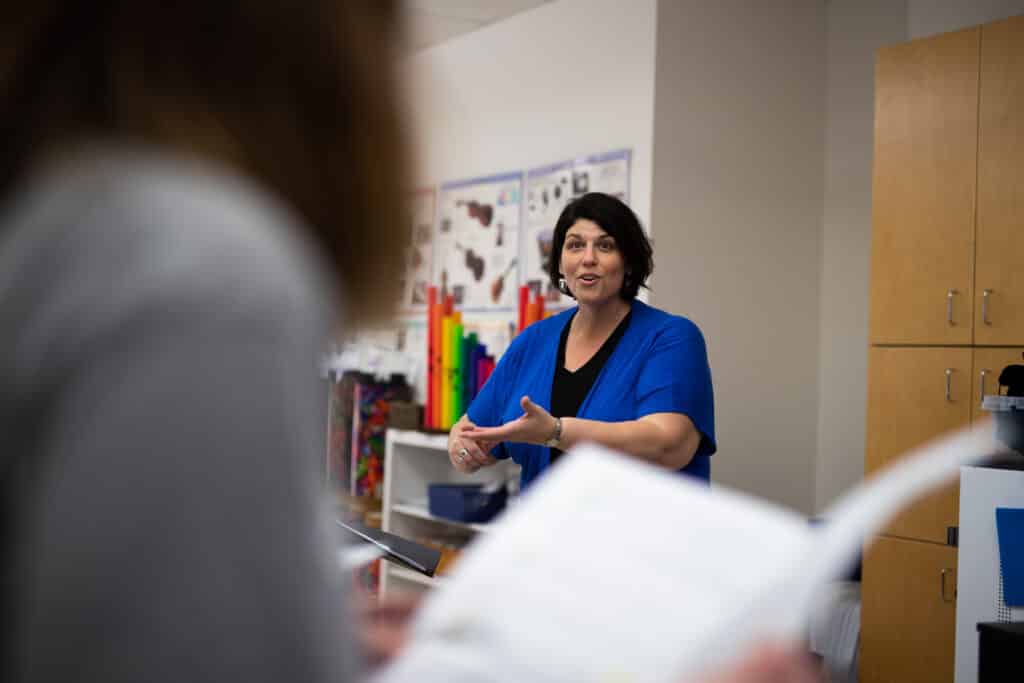The mission of the MSSA music program is to assist and guide each student in developing their innate musicality with a rich, developmentally based curriculum that leads to lifelong participation, enjoyment, and appreciation of music in various forms. The core of the music curriculum is the Kodaly philosophy of music education, which encourages good vocal tone production and teaches musical literacy (reading and notating music rhythms and notes) through traditional folk songs and well-composed music.
The process of music literacy begins with our Primary students and continues through middle school. At MSSA, the primary music program is designed to involve the child in movement exploration, voice exploration, matching pitch, introduction to unpitched and pitched instruments, and preparation of musical elements through traditional folk songs and singing games. There is also a focus on the five voices; singing, talking, whispering, brain, and calling. In addition, we explore playing instruments to match the beat and movement.
Elementary and middle school students participate in singing, music games and dances, rhymes and speech exercises, and movement and folk dances. They are eventually led to rhythmic and melodic literacy, improvisation, and composition. The Orff instruments become an extension of the singing voice and are used to enhance the student’s musical experience.
At the elementary level, we follow the Kodaly Today curriculum and follow the class as they explore the following concepts;
1st year (grade) beat, melodic contour, quarter notes and paired eighth notes, two-note chants (sol and mi), quarter rest, three-note chants (adding la), and two-beat meter.
2nd year (grade) four notes (adding do), half note, five notes (adding re), sixteenth notes, major pentatonic, and four-beat meter
3rd year (grade) eighth note followed by two sixteenth notes, low la, two sixteenth notes followed by an eighth note, low sol, internal upbeat, high do, external upbeat
4th year (grade) syncopation, la pentatonic, dotted quarter note followed by an eighth note, fa (minor seconds), triple meter, low ti, dotted eighth note followed by a sixteenth note.
5th/ 6th year (grade) high ti (major scale), eighth note followed by a dotted quarter note, natural minor, compound meter, harmonic minor (altered notes), compound meter with sixteenth notes, Dorian mode (modal music), compound meter with dotted rhythms, and Mixolydian mode
Middle School continues music literacy through brass, percussion, and chamber singers performance groups.

